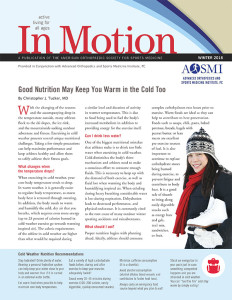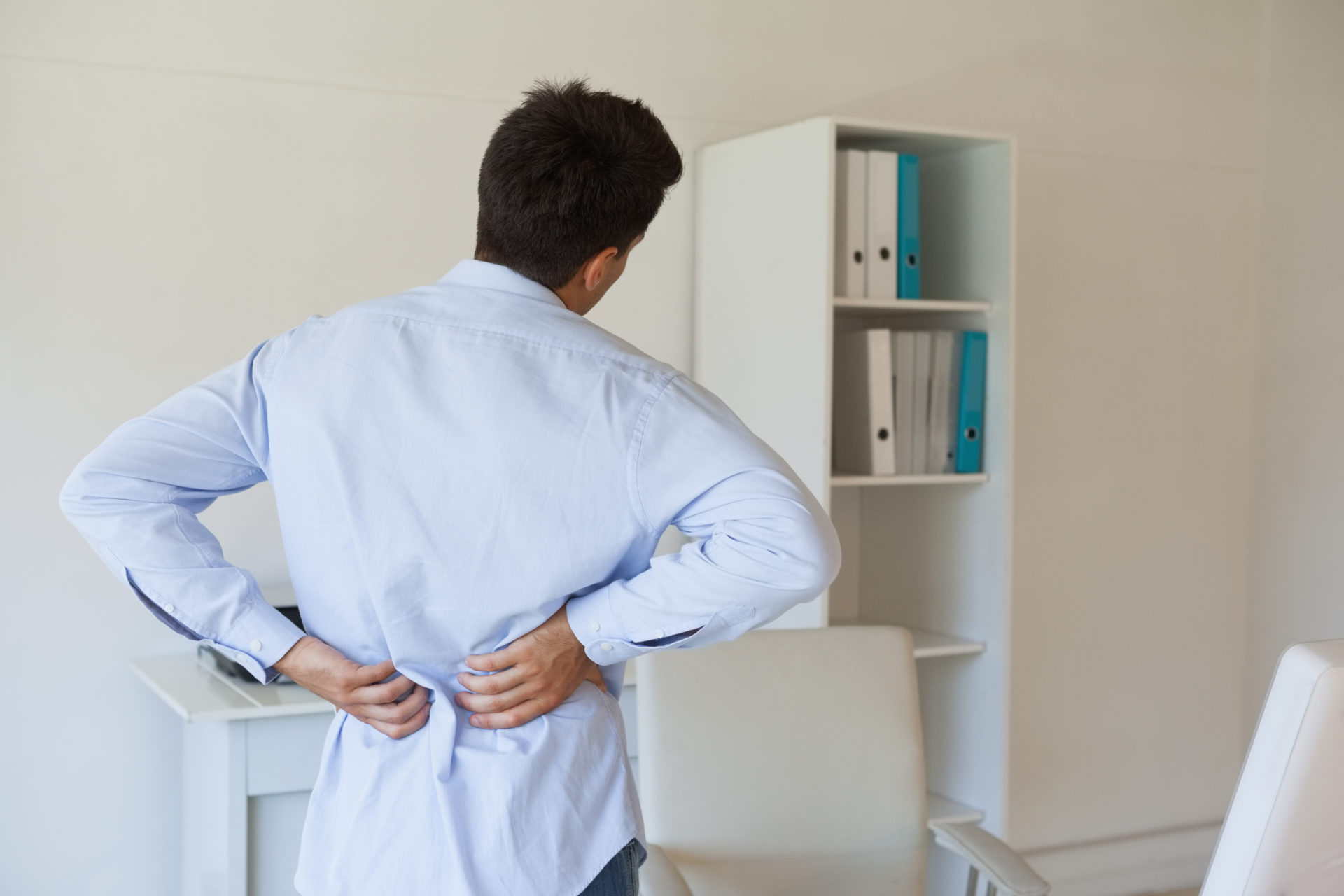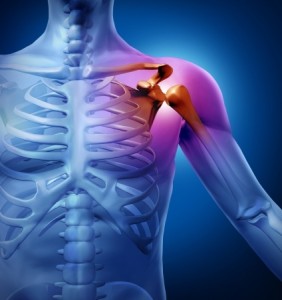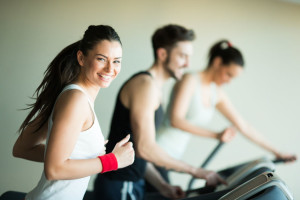What’s New at AOSMI
Whether you’re recovering from a sports injury or are simply experiencing the annoyances of physical pain from the daily grind of day to day living, there are a few simple movements you can try to help relieve your pain. As contrary as it seems, stretching is your saving grace when it comes to dealing with physical pain. Here we offer a few simple movements to get your muscles and joints moving and relieve common pains. As always, if the pain persists or worsens, call an orthopedic specialist to have it looked at. Stretching will not treat physical injuries or solve underlying conditions.
Simple Movements To Relieve Body Pain:
- Hamstring Floor Stretch: Designed to relieve lower back and leg pain, this hamstring stretch move will loosen the leg muscles and provide relief from cramping, spasms, and generalized aches from overuse. To execute, simple lay on your back with both knees bent. With both hands placed behind the knee, lift one leg at a time for 30 seconds. Lift each leg five or six times and then rest.
- Knee To Chest Stretch: This easy stretch is designed to ease pressure on the glutes and help reduce hip pain. To execute, lay on your back with both knees bent. Place your hands around one knee and pull that leg up to your chin (keeping it bent). Return to the starting position and then move to the other leg. Do four or five lifts on each side for maximum relief.
- Spinal Stretch: Your spine controls nearly all your movements. Stretching the muscles, joints, and ligaments that comprise this lifeline will provide all-over relief from aches and pains. An easy spine stretch involves lying on your back with legs outstretched and your arms spread out. Take your left arm and reach over your body to grab your right knee. Pull that leg over the left side of your body (with the knee bent) and hold for twenty seconds before returning to the starting position. Do the same for the other side. Do the motion between five and six times on each side for maximum effect.
These simple movements should keep you pain-free all summer. Again, if pain persists, is acute, or worsens with stretching, call AOSMI to request an appointment with an orthopedic specialist and have your injury diagnosed and treated.
Advanced Orthopedics and Sports Medicine Institute is a medical practice located in Freehold and Monroe, NJ, our medical professionals are experts in orthopedic surgery, joint replacement, sports medicine, integrative wellness, spine care, physical therapy, and more.
Musculoskeletal health refers to the overall health of the muscles and bones that comprise your body’s systems. Understanding the key elements that go into keeping your musculoskeletal system in working order is key to preventing sports injury, body pain, and illness. Our team of New Jersey orthopedic surgeons has comprised a short list of what you need to know about your body’s musculoskeletal system.
What You Need To Know About Musculoskeletal Health:
- Nixing The Soda Can Save Your Body: Soda, especially regular and diet colas, have been shown to lead to osteoporosis. The reason for this lies in the fact that these popular drinks prevent calcium absorption and lead to lower bone density. Be kind to your bones and drink water rather than soda.
- Stand Up Straight: Your mom was right; your posture is crucial to overall health. Poor posture can lead to strains in the wrists, shoulders, elbows, and back and cause persistent pain and muscle damage.
- Get Moving: Whether you’re interested in weight loss or not, getting up and moving around on a regular basis is crucial to musculoskeletal health. Living a sedentary life has been shown to cause painful and dangerous loss of muscle and bone strength and puts you at risk for a host of injuries.
- Slim Down For Your Health: Maintaining a healthy weight is about more than fitting into the latest summer fashion trends. Being overweight has been shown to affect everything from cardiovascular health to the performance of your bones and muscles. The main reason is that all of this extra weight puts undue pressure on your bones and muscles and leads to deterioration and possible injury. In keeping with our previous tip, get up and get moving to keep your system from having to overwork itself to support the weight of your movement.
- Sleep Well: All too often our society places prestige on working around the clock and missing out on crucial sleep time. This does more than lead to overtired, cranky Americans. It is putting all of our systems at risk for disease, injury, and increased pain. To highlight this point, studies have shown that one night of missed sleep can trigger cellular action that can lead to tissue and muscle deterioration. Imagine what regular lack of sleep is doing to your body!
Now that you know the basics of musculoskeletal health, incorporate these tips into your daily life for improved overall health and a reduction of aches and pains. If the pain persists or your suffer an injury, call AOSMI to request an appointment with a sports injury specialist today.
Advanced Orthopedics and Sports Medicine Institute is a medical practice located in Freehold and Monroe, NJ, our medical professionals are experts in orthopedic surgery, joint replacement, sports medicine, integrative wellness, spine care, physical therapy, and more.
 With the changing of the seasons and the accompanying drop in the temperature outside, many athletes flock to the ski slopes, the ice rink, and the mountainside seeking outdoor adventure and fitness. Exercising in cold weather presents several unique nutritional challenges. Taking a few simple precautions can help maximize performance and keep athletes healthy and allow them to safely achieve their fitness goals
With the changing of the seasons and the accompanying drop in the temperature outside, many athletes flock to the ski slopes, the ice rink, and the mountainside seeking outdoor adventure and fitness. Exercising in cold weather presents several unique nutritional challenges. Taking a few simple precautions can help maximize performance and keep athletes healthy and allow them to safely achieve their fitness goals
 Pain, fatigue, and disrupted sleep are among the unpleasant–and potentially even debilitating–symptoms of musculoskeletal pain. The condition can be caused by injury, poor posture, or repetitive motion. It’s not uncommon, but can become so severe that it interferes with normal work, social, and family activities. Extracorporeal Pulse Activation Therapy (EPAT) is among the fastest acting, least invasive means of alleviating musculoskeletal pain. It can be effective on it’s own and as a way of providing patients with the relief they need to begin working on corrective exercises that will help prevent the condition from occurring again.
Pain, fatigue, and disrupted sleep are among the unpleasant–and potentially even debilitating–symptoms of musculoskeletal pain. The condition can be caused by injury, poor posture, or repetitive motion. It’s not uncommon, but can become so severe that it interferes with normal work, social, and family activities. Extracorporeal Pulse Activation Therapy (EPAT) is among the fastest acting, least invasive means of alleviating musculoskeletal pain. It can be effective on it’s own and as a way of providing patients with the relief they need to begin working on corrective exercises that will help prevent the condition from occurring again.
What Is EPAT?
EPAT is an FDA approved technique which uses acoustic pressure to stimulate the metabolism, improve circulation, and facilitate regeneration in injured or stressed tissue. The therapy normally consists of three brief sessions (10-15 minutes each), during which couple gel is applied and an applicator releasing pressure waves is moved slowly over the area–from a patient’s perspective, the experience may look similar to an ultrasound.
Most patients feel relief within forty-eight hours of the treatment, and some as soon as immediately after.
Why would you want to use EPAT?
Major reasons why people choose to have EPAT done are:
- Non-invasive
- No anesthesia required
- No incision/accompanying risk of infection and/or scarring
- Few known side effects, other than some residual pain within that forty-eight hour window
- Patients are able to bear weight/move immediately after treatment
- Fast/convenient
Important things to remember about having musculoskeletal pain are:
- It’s important to diagnose the root cause of musculoskeletal pain prior to treatment. It could be caused by an underlying neuromuscular condition, or even by an emotional or psychological condition like anxiety or depression. If this is the case, the other condition must be treated separately.
- Therapeutic massage, physical therapy, medication, and surgery are among many treatments that may be prescribed alongside or as an alternative to EPAT to treat the root cause of musculoskeletal pain.
- EPAT is not a corrective or preventative treatment; if poor posture or repetitive motions caused the musculoskeletal pain, chances are they’ll cause it again unless addressed.
Request an appointment to learn more about EPAT and whether it may be effective for you.
 “Hey Doc, how come you’re prescribing antibiotics for me prior to dental work, when my dentist told me that is an old practice?”
“Hey Doc, how come you’re prescribing antibiotics for me prior to dental work, when my dentist told me that is an old practice?”
The use of antibiotics as prophylaxis, disease prevention agent, prior to dental work on patients after a total joint replacement (TJR), has been an issue of confusion among patients, doctors and dentists. Traditionally, orthopedic surgeons recommend coverage with antibiotics to prevent prosthetic joint infection (PJI). The concept is to counteract the introduction of bacteria when it enters the blood stream or Bacteremia. The incidence of PJI is between 1% to 3% depending on the type of study you read. PJI can be very devastating if it occurs and may lead to loss of limb or life.
In 2003, the American Dental Association (ADA), and the American Academy of Orthopedic Surgeons (AAOS) had a conference on the issue and made a recommendation to use antibiotic prophylaxis for 2 years following a total joint replacement. It was to be given orally or intravenously, within 1 hour of the procedure.
In 2009, The AAOS changed the 2003 recommendation stating that the coverage should be lifetime. Because of the concern of the medical community regarding resurgence of antibiotic resistant organisms, and because evidence based medicine showed lack of correlation between bacteria found in the mouth and bacteria that is commonly gown in PJI, another meeting was convened.
The common organisms found in PJI are Staphylococcus Aureus, MRSA and Staphylococcus Epidermidis. These organisms are not commonly found in the mouth.
In 2012, the ADA and AAOS, together with epidemiologist and infectious disease specialists, met again and came out with the following recommendation, “the practitioner might consider discontinuing the practice of prescribing prophylactic antibiotics.” The statement seems to be inconclusive and weak, leaving the decision upon the dentist, orthopedist and confused patient.
How did I resolve the issue?
My patient happens to have Rheumatoid Arthritis and Type I Diabetes, definitely a high risk for infection of any kind, any source. If I advised no antibiotic prophylaxis and he got infected, there is no evidenced based medicine type of explanation I can give to this patient that will sound credible to him.
All he knows is he got infected because the two professionals he relied upon failed him. He is high risk to begin with and should be covered from wherever the bacteremia will come from. A single dose of Cephalexin will not cause havoc to his bacterial flora.
My further recommendations for prophylaxis, dental or otherwise (Minor or Major surgeries, biopsies, colonoscopy or any procedure that may draw blood) would be, coverage if you belong to this group:
A. Immunocompromised/immunosuppressed, including: Inflammatory arthropathies: Rheumatoid Arthritis (RA), Systemic Lupus Erythematosus (SLE, Lupus), drug or radiation induced immunosuppression
B. Other high-risk patients:
Type 1 Diabetes
Prior PJI
Malnourished state (post TJR)
Hemophilia
First 2 years following TJR, (again empirical and not evidence based)
Suggested antibiotic regimen: Cephalexin1 gram, Amoxillin 2 grams 1 hour prior to procedure, can be given intravenously.
Penicillin allergy: Clindamycin 600 mg orally 1 hour prior to the procedure.
No second dose recommended even if the procedure is prolonged.
Manuel T Banzon MD FAAOS
04/29/2015









